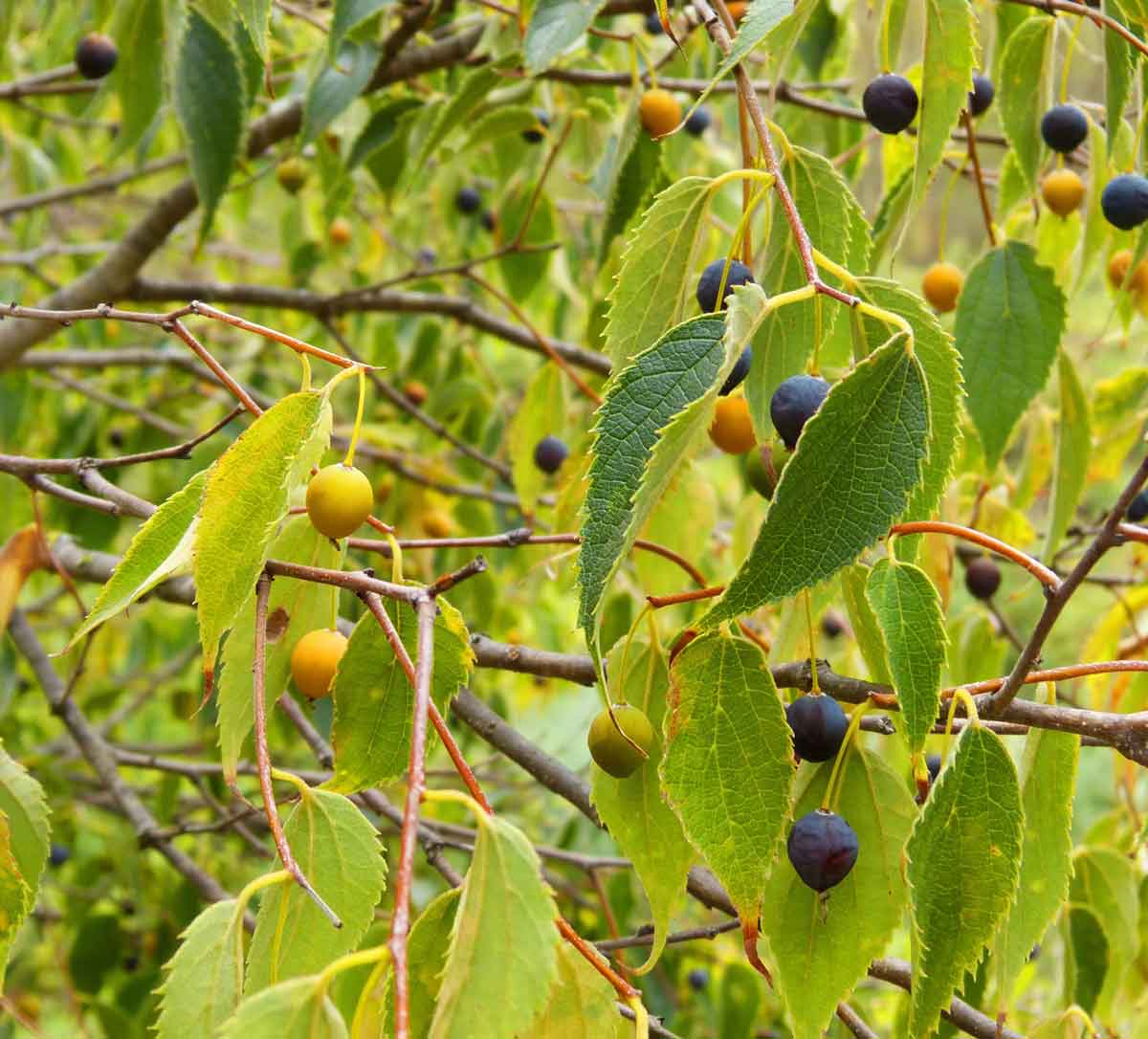Family: Cannabaceae
Other Common Names: sugarberry, nettletree, beaverwood
Hackberry is native to much of eastern North America and it is a common tree throughout Ohio.
The easiest way to recognize hackberry is by the raised warty ridges on the bark. The bark is light brown or silvery grey, and it is usually a medium-sized tree with a slender trunk.
Hackberries have alternate leaves that have pointed tips and coarsely toothed edges.
The hackberry tree can be easily confused with the sugarberry tree, but the two trees can often be distinguished by range and habitat. The hackberry tree also has wider leaves that are coarser above than the sugarberry tree.
The hackberry tree produces small fruits that turn orange-red to dark purple in the autumn. The small berries are eaten by a number of birds and mammals, and the animals disperse most of the seeds. This tree also hosts butterfly larva, especially the hackberry emperor.
The pea-sized berries are also edible for humans, but the seed is very hard and cannot be chewed, so it must be discarded. Omaha and Pawnee Native Americans used to eat the berries, and the Dakota used them for flavoring meat.
This tree has a medium growth rate, which makes it a good candidate for planting in areas in need of erosion control or quick shade.
Hackberry wood is heavy, soft, and not very strong. It also rots easily, so it is not desirable commercially, but it is used sometimes for fencing and cheap furniture. The hackberry tree is also sometimes used as a street or landscape tree.
References:
https://en.wikipedia.org/wiki/Celtis_occidentalis
http://forestry.ohiodnr.gov/hackberry
